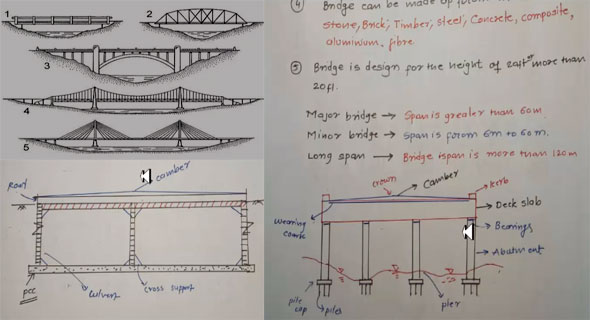A bridge is a structure built to span physical obstacles without closing the way underneath such as a body of water, valley, or road, for the purpose of providing passage over the obstacle. There are many different designs that each serve a particular purpose and apply to different situations.
The bridge is usually extended up to 6 m or over 6 m.
There are several types of bridges:-
a. Truss Bridge
b. Suspension Bridge
c. Simply Supported Bridge
d. Cable-stayed Bridge
e. Cantilever Bridge
f. Arch Bridge
Different types of materials like stone, brick, timber, steel, concrete, composite, aluminium, fibre are used to construct a bridge.
A bridge is designed for the height of 20 ft or in excess of 20 ft.
For major bridge, the span is over 60 m
For minor bridge, the span varies from 6 m to 60 m
For long span, the span is over 120 m
A culvert, meaning ‘drilled/cut/carved stone’; from Kal, meaning ‘stone’, and Vettu, meaning ‘cut/drill’) a structure that allows water to flow under a road, railroad, trail, or similar obstruction from one side to the other side. Typically embedded so as to be surrounded by soil, a culvert may be made from a pipe, reinforced concrete or other material.
We have several types of culverts :
a. Slab culvert
b. Box Culvert
c. Pipe Culvert
For more information, watch the video tutorial.





